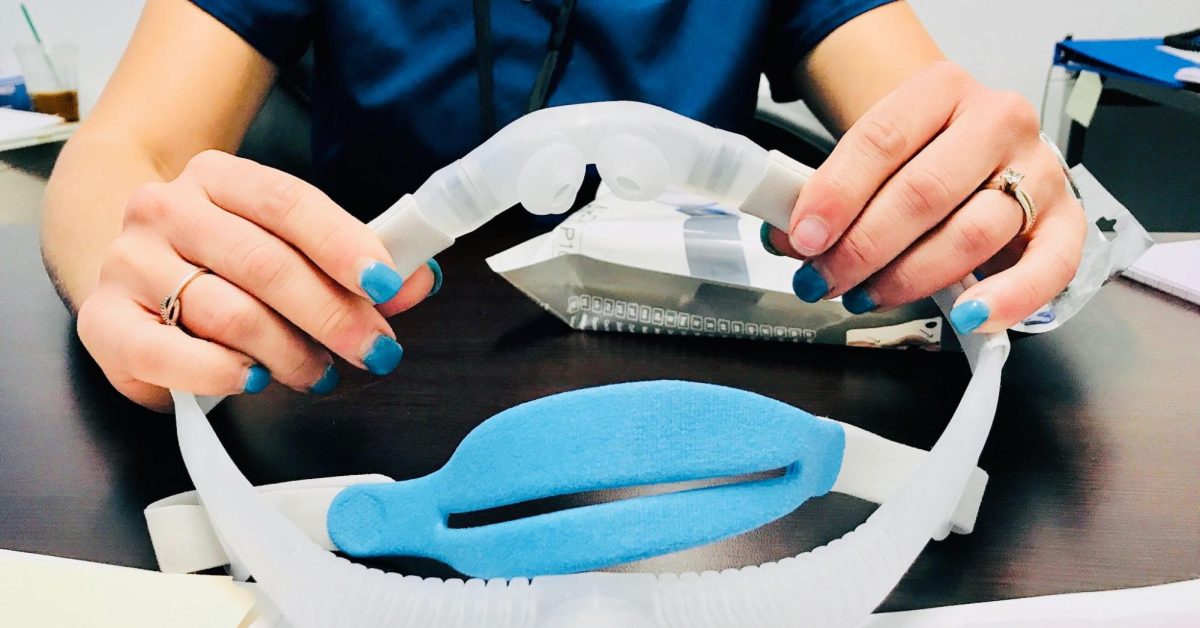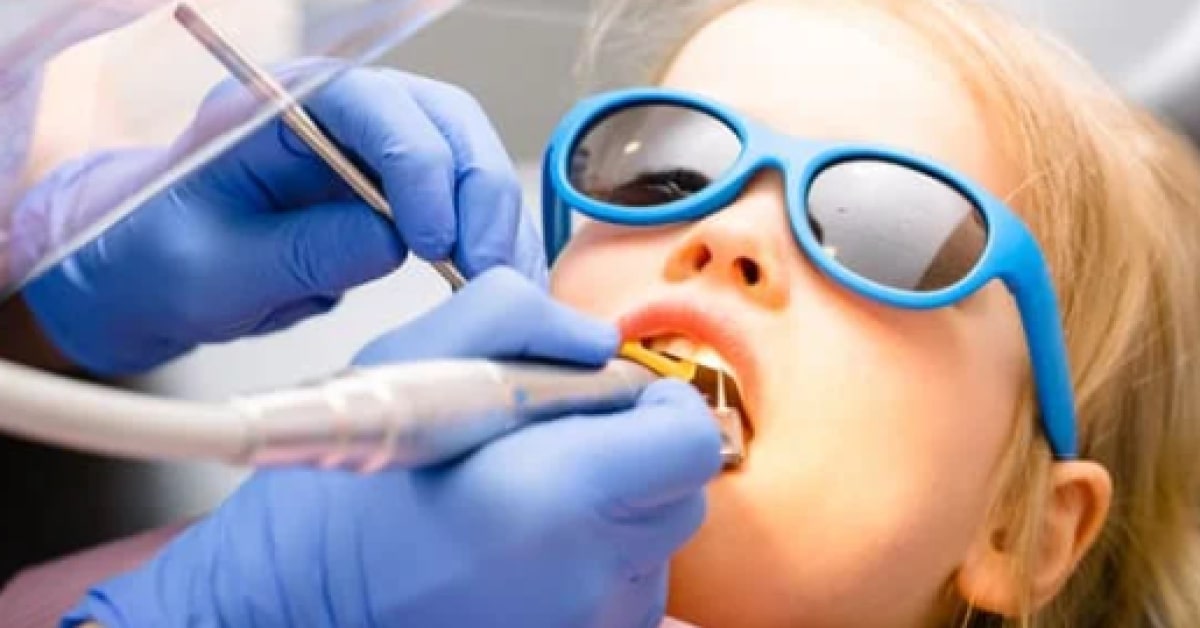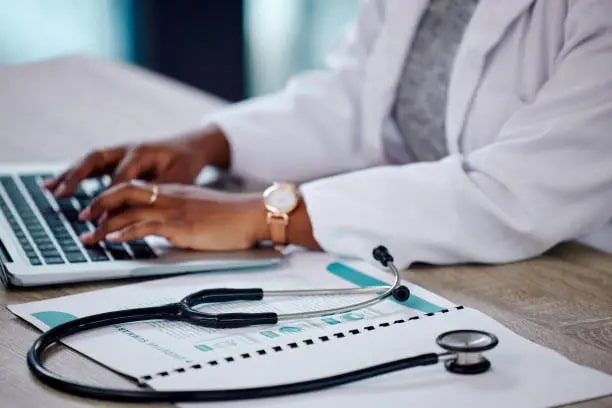Blog
January 30, 2023 • 15 mins readBilling Medical Insurance for Sleep Appliances: READY. SET. BILL!
Get the latest information on billing medical insurance for sleep appliances. Learn how to get your sleep appliances billed and get paid quickly and easily.
Author

Crystal May
Director of Medical Billing Education for Devdent

In this Article
Have you incorporated sleep screening and treatment into your practice? Are you considering adding this service but have some reservations? Regardless of where you are in the process, chances are high that you have wondered how you will get paid for these services.
Unfortunately, dental insurance doesn’t cover sleep appliances, and patients don’t want to pay out of pocket. On average, mandibular advancement devices (MDA) cost between $1800-$2000 on the low end and can reach upwards of $5000 on the high end. These costs do not generally include sleep testing, imaging, airway evaluation tools, or time spent with the doctor. Adding all these up, the patient could be looking at a treatment cost of over $3000-$6000, which is a huge burden of cost to your patient.
When you are new to treating sleep, “selling” a $3000-$6000 treatment to a patient is challenging. Add that the patient often needs help understanding why their dentist is talking to them about sleep instead of their teeth, and it’s no wonder case acceptance is the biggest obstacle we see from our customers new to dental sleep. Luckily for everyone involved, most medical insurance offers coverage for sleep treatment, including appliance therapy.
Many dentists, and dental team members, need to become more familiar with medical insurance or the process of adding medical billing to the practice. Medical payors will pay dentists, just like physicians, for treatment within the scope of their license that is medically necessary. The list of covered procedures is long. The most commonly covered procedures include appliances, implants, oral surgery, radiographs, periodontal treatment, laser treatment, and almost any treatment related to a dental accident or trauma. For more information on the possibilities of adding medical billing to your dental practice, please click HERE to view the Top 10 Medical Billing Questions webinar.
There’s some good news for those wanting to bill medical insurance for sleep appliances. They are one of the most straightforward procedures to bill through medical insurance due to the well-defined guidelines. There is only one ICD-10 Diagnosis Code for Obstructive Sleep Apnea (OSA), G47.33, and there are currently only two CPT procedure codes for appliance therapy, E0486, and K1027.
K1027 is a new procedure code added in 2022, leaving much to learn about payor coverage. Once you have the medical billing codes, a copy of the patient’s insurance card, and the proper documentation, you are ready to bill medical insurance.
READY. SET. BILL.
READY: Prepare Proper Documentation
To bill medical insurance for a sleep apnea appliance, you must have very specific documentation, which includes the following:
● SOAP Note
● Sleep Test With Diagnosis From Specialist
● Prescription or Order
● Signed CPAP Affidavit
SOAP Notes:
The first step in preparing to bill medical insurance is your clinical notes, also known as SOAP notes. Simply put, SOAP notes are just a way to organize your clinical records and make sure you “check every box.” A SOAP note for a sleep appliance should include the following information, at a minimum:
● The patient’s name and DOB
● The date of service
● The reason for the visit
● The provider’s full name
S: Subjective:
Chief Complaint (CC): List symptom(s) the patient has related to their sleep disorder.
** Tip: Ask your patient, “Of the symptoms you reported, which bothers you the
most, or which would you most like to improve?” Their answer is generally the
chief complaint and the patient motivator.
Review of Systems (ROS):
This includes a systematic review of the patient’s overall health. ROS may consist of detailed questions you ask or a thorough review of the patient’s health history and medication.
**Tip: Include any steps the patient reports taking to improve symptoms and the
adverse effects these conditions or symptoms have had on the patient’s quality
of life.
Health History and Medication List:
This is a list of the patient’s reported health conditions, symptoms, and medications. If a medication is known to affect sleep or breathing or is used to treat sleep, list that detail as well.
** Tip: Some insurance payors require documentation of comorbidities to OSA.
Since these are only supporting conditions or symptoms, you do not need to
verify the accuracy of the patient’s health history. You must reference the source,
such as the patient reports, spouse reports, or child reports.
O: Objective:
Vital Signs: If taking vitals, they can be reported here or added to the summary.
Intra- and Extraoral Exam: This should include detailed findings of both an
intraoral and extraoral exam.
**Tip: We recommend an evaluation that includes a minimum of the tongue size,
tonsil grade, Mallampati score, and neck circumference. Additional sections could consist of an assessment of the TMJ, tooth position, bite, and range of motion, to name a few.

Radiographic Findings or Testing Results:
This section includes clinical detail. It can be evidence or test results obtained from another physician or conducted or ordered by the dentist.
**Tip: This section of your notes should not include the symptoms or conditions a
patient reports. It should consist only of confirmed clinical findings.
A: Assessment: This section includes the dentist’s findings, diagnosis, or initial
clinical impression (pending official diagnosis).
**Tip: This section should include the dentist’s diagnosis or diagnoses and
should have supporting documentation in the Subjective or Objective sections
above. A commonly used assessment for sleep screenings is “Possible OSA.”
P: Plan This section should include the plan for your patient based on the
problems identified above.
**Tip: The patient’s treatment plan can be in a bullet point list or paragraph
format. Keep your SOAP notes clean and easy to read. Any other provider
should be able to read the SOAP notes you have written and easily understand
the treatment plan and the reason behind it.
Sleep Test With Diagnosis From Specialist:
Rules and regulations concerning sleep tests vary significantly from state to state.
However, regardless of the location of your practice, only a board-certified sleep specialist can interpret sleep studies and diagnose Obstructive Sleep Apnea. For this reason, dentists must work with specialists to ensure proper protocols are followed when treating OSA.
There are countless testing solutions, ranging from in-lab polysomnography to FDA-cleared apps to diagnose sleep apnea. Regardless of the testing method you and your patient choose, the results will need to be interpreted by the sleep specialist. You can refer to a local sleep specialist for testing or hire a third-party specialist to complete the interpretation remotely.
Documentation Requirement:
Copy of Sleep Test
Interpretation confirming the diagnosis of OSA and the severity
**Tip: This is when the ICD-10 Diagnosis Code that you will use for medical billing,
G47.33, is obtained.
Prescription or Order:
After the specialist completes the interpretation, they will generally provide a summary of treatment options. Their recommendation may or may not include Oral Appliance Therapy and a corresponding prescription or order. Regardless of the specialist’s recommendation, the patient may elect another treatment modality, or as is unfortunately all too common, a patient who tries CPAP therapy is noncompliant, leaving the disease untreated. In these scenarios, you do not need to return to the original specialist for the prescription. Any physician treating the mutual patient can provide the prescription or order.
Documentation Requirement:
Prescription or order from any physician
**Tip: Ideally, the prescription would include the CPT code for the ordered treatment:
Oral Appliance Therapy for OSA – E0486 or K1027.
Signed CPAP Affidavit:
Most insurance payors require a signed CPAP affidavit for all oral appliance claims. This document doesn’t prohibit the patient from trying CPAP or a similar therapy in the future. It shows proof that the patient was educated on their CPAP treatment options. They will select one of two options: They tried and failed at CPAP or refused to try. Either option is acceptable to the payer; they just want to see the signed document.
**Tip: All needed forms for sleep treatment and medical billing are included in Imagn Software.
SET: Verify Insurance Coverage
Once the documentation is in order, it is essential to look at the patient’s insurance plan. Realize that insurance payors have many plans, and no two are equal. Some plans may have specific coverage requirements for oral appliance therapy.
Example: Cigna ABC plan may require a documented comorbidity if the AHI is <15. In comparison, Cigna XYZ plan may have no restrictions.
You will need a Verification of Benefits (VOB) to determine the coverage requirements, patient-specific benefits, and pre-authorization requirements. Usually performed via a live phone call, this step is one of the most critical in the medical billing process and is the only way to know if billing medical insurance for this patient is possible.
**Tip: If the patient has no benefits at your practice due to policy type or network requirements, has a high deductible, or has no coverage for oral appliance therapy, you may opt out of medical billing for that particular patient.
If pre-authorization is required, the authorization request is submitted along with the documentation from above. Think of it as “arguing your case” or proving medical necessity.
**Tip: Give yourself some time and be honest with your patient about how long the process may take. Pre-authorizations take approximately two weeks to process. You can only deliver the appliance after an approved pre-auth is issued if you want medical coverage.
BILL: Submit Claim and Get Paid
With all the required documentation, the completed VOB, and an approved pre-auth (if applicable), you are ready to deliver the appliance to your patient and submit the claim to medical insurance.
Medical insurance has very few requirements regarding delivery or post-delivery documentation.
It is vital to have detailed SOAP notes for the appliance delivery appointment. The insurance payor may request clinical notes for appliance delivery. Include appliance insertion details, home care review, and next steps for follow-up.
**Tip: Submitting medical insurance claims does require training. For more information on the services Devdent offers and how we can help with all your medical billing needs, please take a Free Assessment HERE
Billing medical insurance for all services, including sleep appliances, can be an incredible way to help minimize a patient’s burden of out-of-pocket costs, making access to care more affordable. Tapping into this new revenue source will strengthen your practice through higher case acceptance and, more importantly, help more of your patients.
Visit https://campaign.dentrix.com/imagn for more information or to schedule a call with one of our experts.
About the Author:
Crystal May is the co-founder and COO of Devdent. She is dedicated to helping dental practices be successful in dental sleep medicine and medical billing. She has over 17 years of medical billing experience, 15 years with an emphasis on dentistry, and 10 years on airway and sleep. Crystal is a leading educator and has presented at hundreds of events for major corporations and organizations. She owns and manages multiple dental practices, holds multiple US and international patents, has developed several software products specifically designed for dental offices, and has started companies that help practices with the successful implementation of dental sleep medicine and medical billing. Crystal’s mission is to educate every dentist in the country about their opportunity and obligation to help identify sleep disorders in their patients.
This article was written in collaboration with Henry Schein, Inc.



